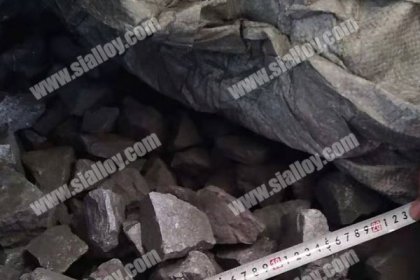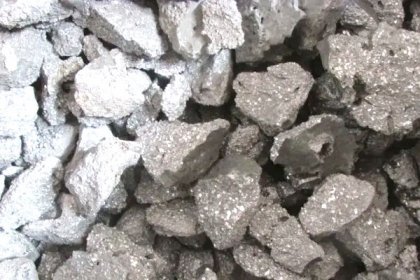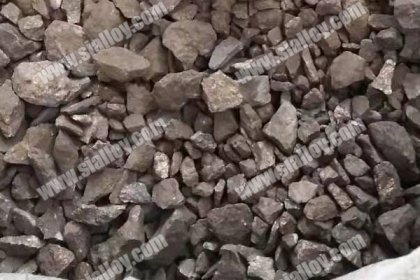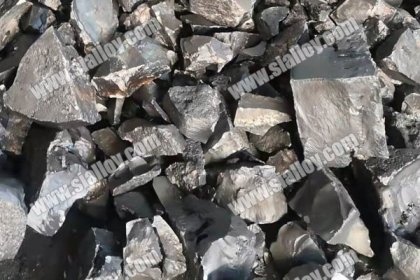common defects of casting-part two
Last week share some details of common casting defects, today we Anyang Huatuo Metallurgy Co., Ltd share more details as following:
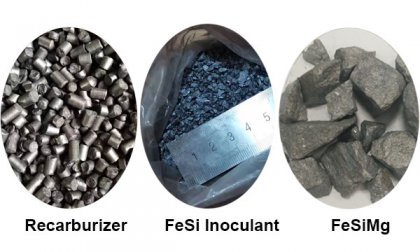
7.Iron beans:There are small iron beads in the stomata.
(1) The molding sand is wet, and the inner runner is too high from the lowest part of the casting, causing the molten iron to splash and form iron beans. After the molten iron is full, the iron beans cannot be melted, making it encased in the casting together with gas.
(2)The air permeability of the sand core is not good, and the amount of gas generated is large. When a large amount of gas is generated from the molten iron, the molten iron will roll, which is easy to produce iron beans on the surface of the casting near the sand core.
Prevention method:
(1) Reduce the moisture of the molding sand or adopt a bottom injection pouring system to smoothly inject into the cavity to reduce splashing of molten iron
(2) Appropriately reduce the addenda with large gas content in the core sand, and strengthen the ventilation of the sand core.
8.Cold barrier and insufficient pouring:There are gaps or partial lack of meat on the castings that are not completely fused, with rounded edges around them.
Cause Analysis:
(1) The pouring temperature of molten iron is too low
(2) The chemical composition of the molten iron is inappropriate
(3) The sand mold is too wet
(4) The setting of the gating system is unreasonable, and the gate section is too small
(5)Part of the casting wall is too thin
(6) Improper location of cold rail
(7) Skew when setting the core
Prevention method:
(1) Properly increase the pouring temperature
(2) Control the proper chemical composition of molten iron
(3) Reduce the moisture in the molding sand
(4) Enlarge the gate size to speed up the pouring speed; for long castings, the molten iron can be introduced at both ends
(5) Improve casting structure
(6) Reasonably set up cold iron
(7) The sand core is placed correctly
9.Cast spiral, gray:The casting casting section is numb or gray tissue
Cause Analysis:
(1)In the ingredient melting, ingredients are undesirable, and the silicon content is too high.
(2) Melting the falling material is not uniform, or the iron solution is mixed uneven
(3) The wall thickness of the casting is too large, in thick wall, producing hemp or gray
(4) Open the box too late
Preventive method:
(1)Correctly select the chemical composition, reasonable ingredient, and the carbic silicon content control during the melting process is within the required range.
(2) Install the front furnace to uniform iron
(3) For thick walled castings, add the addition of bismuth or reduce the casting temperature of the iron solution.
(4)Adjustably unpack
10.Castings, Crispy Performance:Mechanical performance does not meet the number of grades, especially the toughness is insufficient, the hardness is too high; excessive cement or beads in the metallographic tissue
Light; black heart can forged iron pieces often show white or flower heart
Cause Analysis:
(1) Improper chemical composition of castings, low silicon or high sulfur or manganese high
(2) Toad chrome content or oxygen, nitrogen, and hydrogen content exceed
(3) The graphitization annealing is not correct or improper; the first or second stage of graphitization is not complete
(4) Improper control when using low temperature stone ink annealing process
(5) Improperization of duster is too low or improper controlled carbon atmosphere
Preventive method:
(1) Correctly control the iron hydraulic component and gas content
(2) Correctly control the graphite annealing or decarbonation annealing process.
11.Casting deformation:Annealing the shape of the casting, significant changes in size
Cause Analysis:
(1)Improper castings
(2)The first phase of the graphitized annealing temperature is too high, the time is too long
(3)Local temperature in the annealing furnace is too high
Preventive method:
(1)Pay attention to packing methods, increase partitions or fillers
(2)Appropriately reduce the first stage of graphitization annealing
(3)Improve the structure and operation of the annealing furnace, make the furnace temperature uniform
(4)Use low temperature stone ink annealing process
12 Casting is severe:Thicel oxide formation is formed on the surface of the casting
Cause Analysis:
(1)Hygistive property.
(2)The annealing box is not good.
(3)The annealing temperature is too high, the time is too long
Preventive method:
(1)The annealing box is sealed.
(2)When the silicon is high, reduce the annealing temperature is reduced.
(3)Reasonable control of manganese.
(4)Using a low temperature stone ink annealing process.
13.Temper brittleness:The casting is white and the impact toughness, and the elongation is significantly reduced.
Cause Analysis:
(1) After the second stage, the graphitization is annealing or after annealing, the cooling is too slow in the range of 550 to 400 ° C, the residence time is too long, and the carbide or phosphatide is precipitated along the ferrin body crystal boundary.
(2) The content of cast iron phosphorus is high, especially when the silicon content is high, it is more likely to appear back brittleness.
(3) Turn zinc in the temperature range (400 ~ 550 ° C) in the temperature range of the backfinder
Preventive method:
(1)After annealing, you will be cooled at 600 ~ 650 ° C.
(2) Appropriately control phosphorus, silicon, nitrogen content in the iron solution
(3)The galvanized operation avoids the back of the crispy temperature zone. When the galvanized back is brittle, the casting can be returned and eliminate brittleness.
(4)The crispy casting has been reheated to 650 ° C (650 ~ 700 ° C) short-time thermal insulation, then it is faster, and the toughness can be restored.
14.Tree branches:After the castings are annealing, there is a slight crack that can not be found in the naked eye, there is a significant oxidation of the torch-like loose structure, pointing from the surface
Cause Analysis:
When the casting is solidified, a tiny thermal cracking and dendritic loose is formed due to the conditions of solidification and crystallization, such as structural and crystallization. During the annealing, the furnace gas is invaded along the crack and the dendrite gap, causing severe oxidation and further expansion of the looseness.
Preventive method:
Improve gestation treatment, refine grain, eliminate dendritic tissue, and optimize replenishment conditions. Prevent plate-like white mouth tissue and thermal cracking.
 中文
中文
